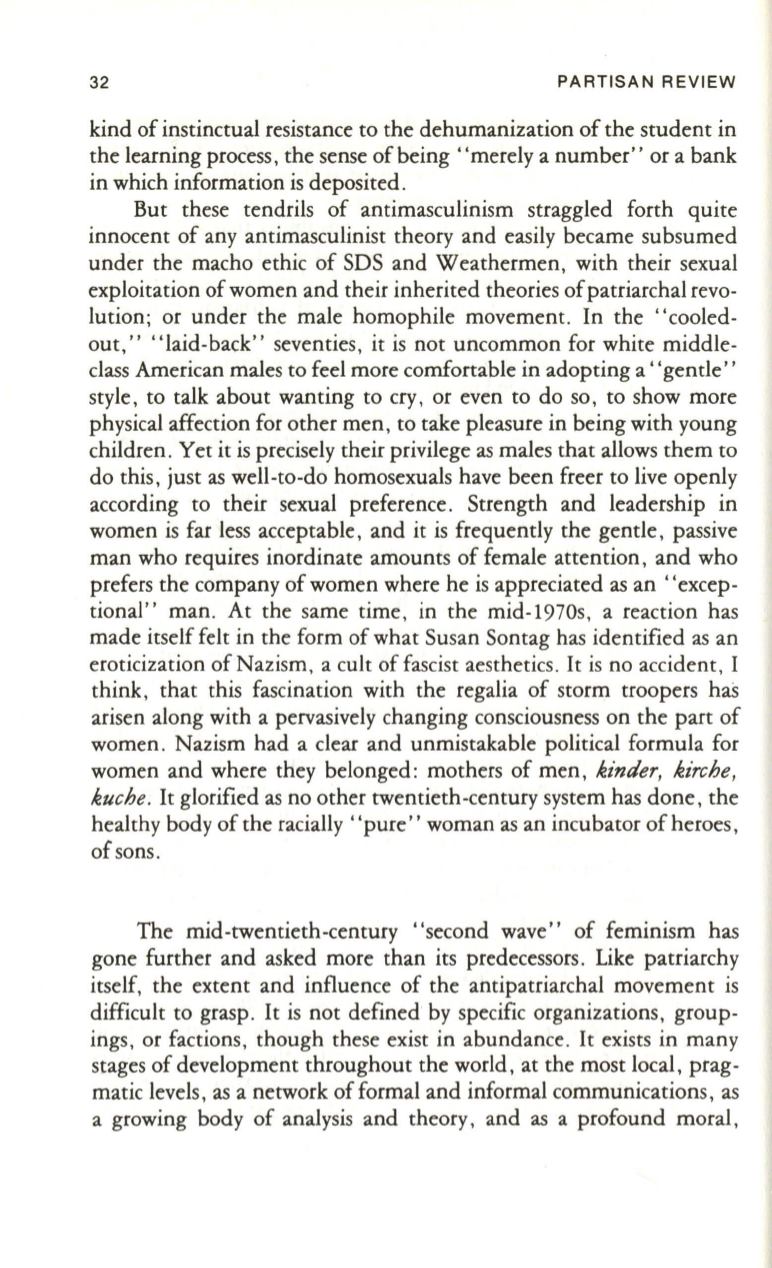
32
PARTISAN REVIEW
kind of instinctual resistance to the dehumanization of the student in
the learning process, the sense of being "merely a number" or a bank
in which information is deposited.
But these tendrils of antimasculinism straggled forth quite
innocent of any antimasculinist theory and easily became subsumed
under the macho ethic of SDS and Weathermen, with their sexual
exploitation of women and their inherited theories ofpatriarchal revo–
lution; or under the male homophile movement. In the "cooled–
out," "laid-back" seventies, it is not uncommon for white middle–
class American males to feel more comfortable in adopting a "gentle' ,
style,
to
talk about wanting to cry, or even to do so, to show more
physical affection for other men, to take pleasure in being with young
children . Yet it is precisely their privilege as males that allows them to
do this, just as well-to-do homosexuals have been freer to live openly
according to their sexual preference . Strength and leadership in
women is far less acceptable, and it is frequently the gentle, passive
man who requires inordinate amounts of female attention, and who
prefers the company of women where he is appreciated as an "excep–
tional" man . At the same time, in the mid-1970s, a reaction has
made itself felt in the form of what Susan Sontag has identified as an
eroticization of Nazism, a cult of fascist aesthetics.
It
is no accident, I
think, that this fascination with the regalia of storm troopers haS
arisen along with a pervasively changing consciousness on the part of
women. Nazism had a clear and unmistakable political formula for
women and where they belonged: mothers of men,
kinder, kirche,
kuche.
It
glorified as no other twentieth-century system has done, the
healthy body of the racially "pure" woman as an incubator of heroes,
of sons.
The mid-twentieth-century "second wave" of feminism has
gone further and asked more than its predecessors. Like patriarchy
itself, the extent and influence of the antipatriarchal movement is
difficult to grasp.
It
is not defined by specific organizations, group–
ings, or factions, though these exist in abundance.
It
exists in many
stages of development throughout the world, at the most local, prag–
matic levels, as a network of formal and informal communications, as
a growing body of analysis and theory, and as a profound moral,


